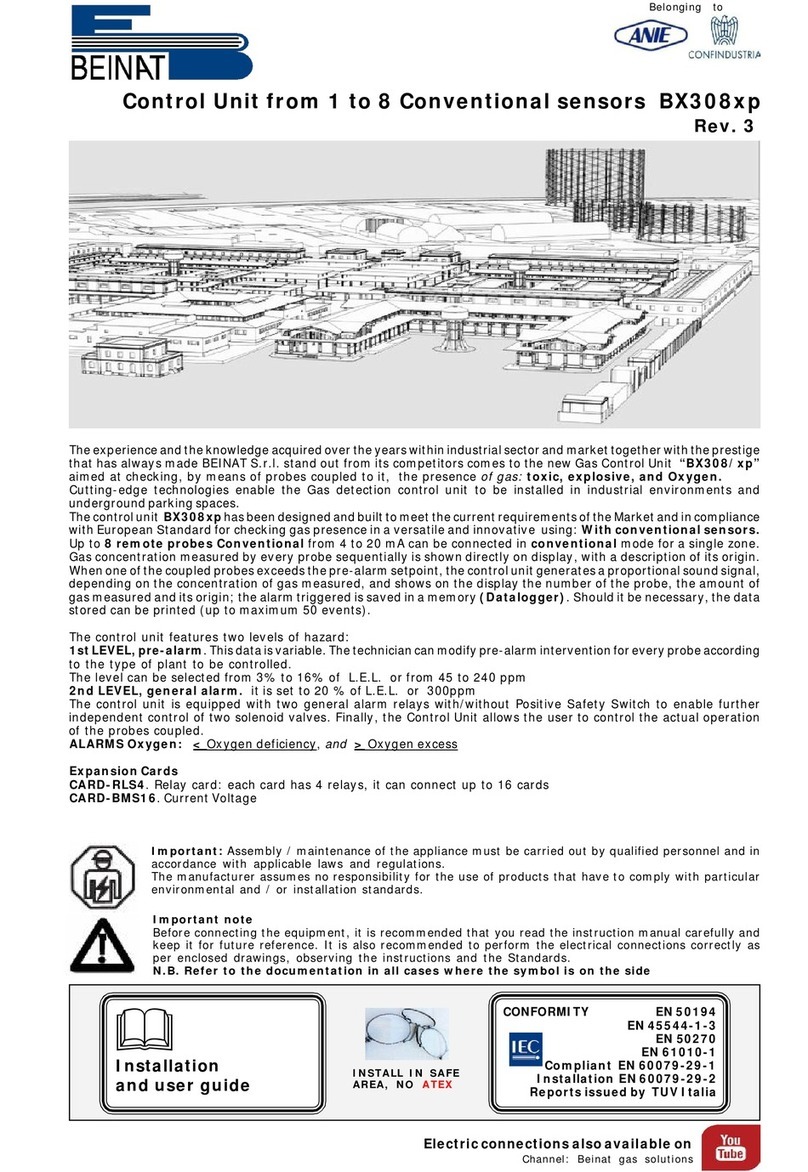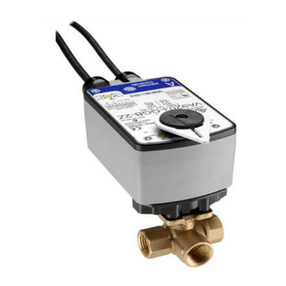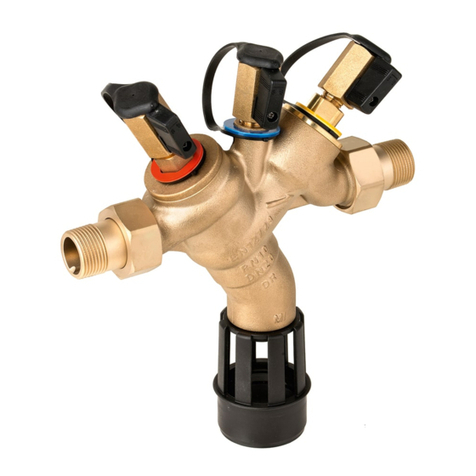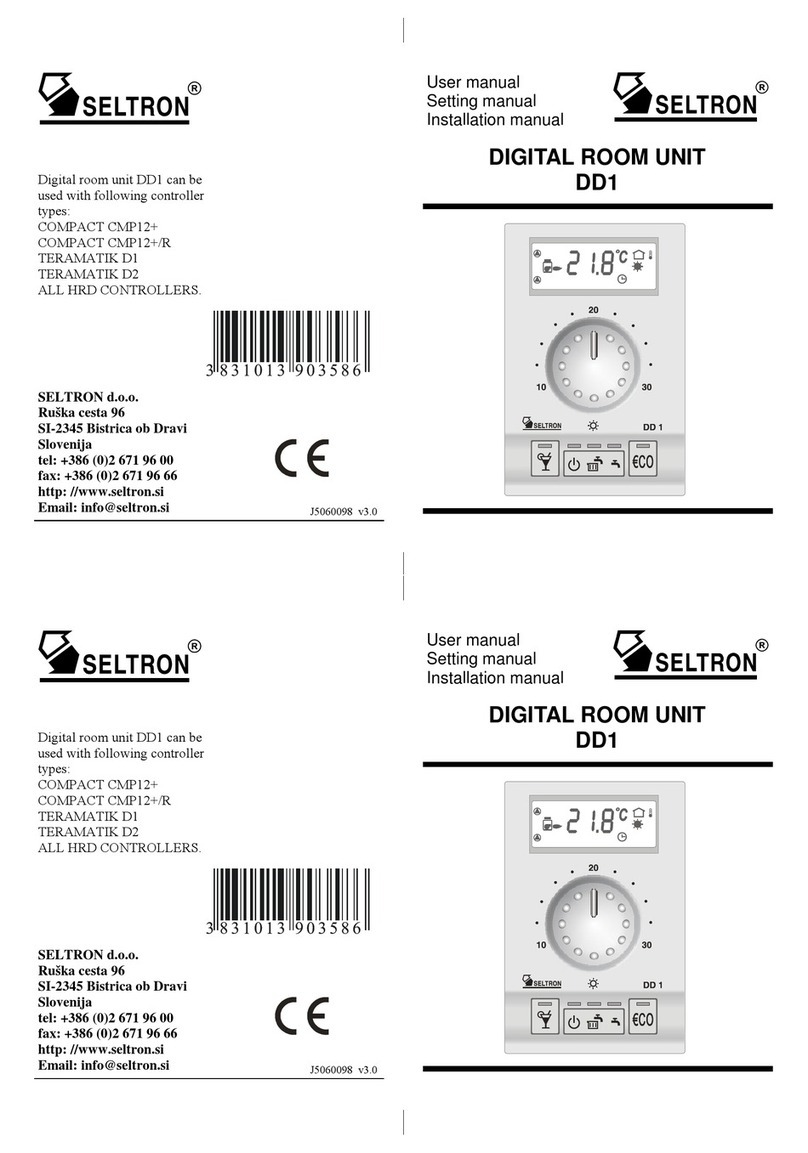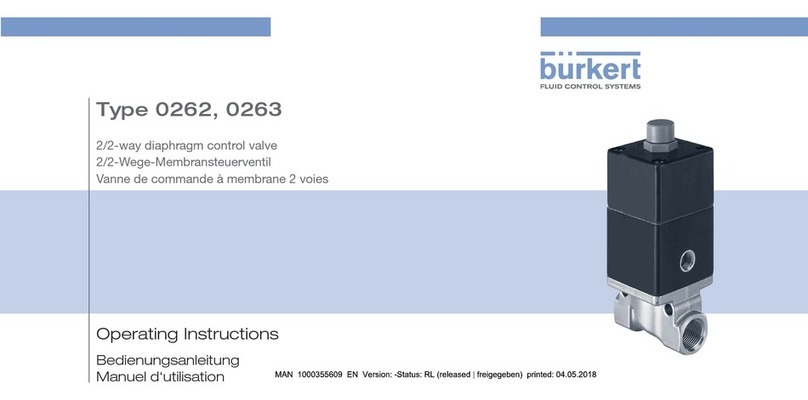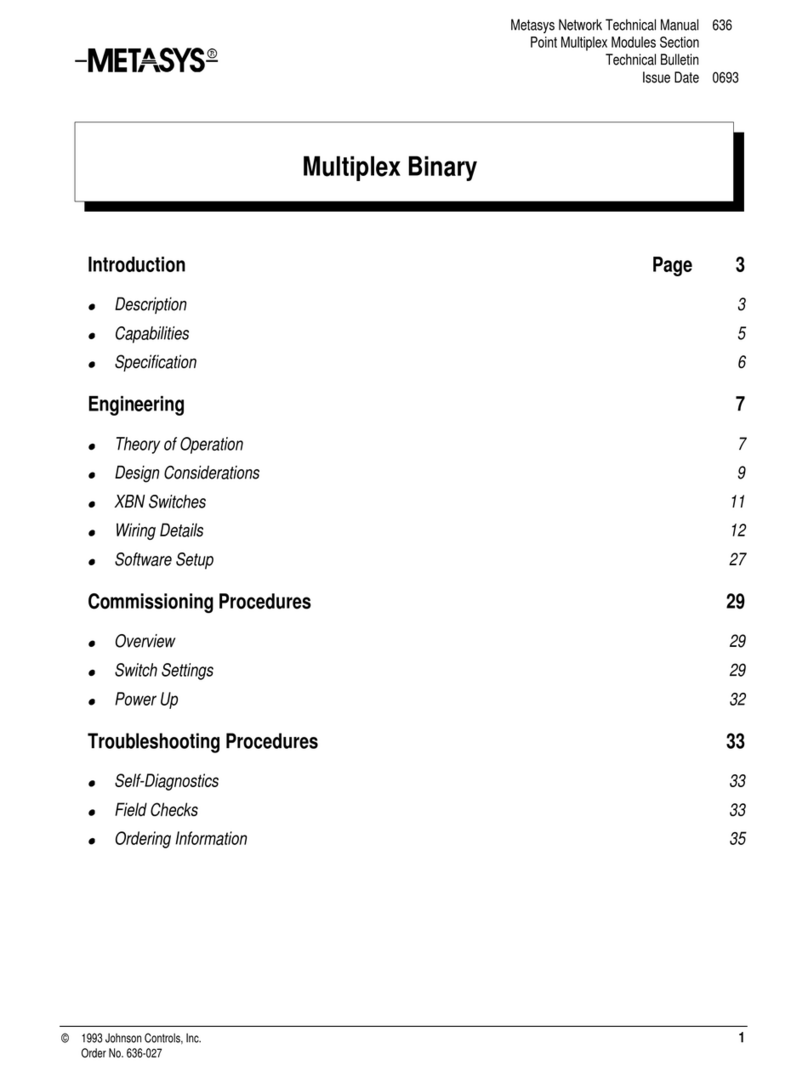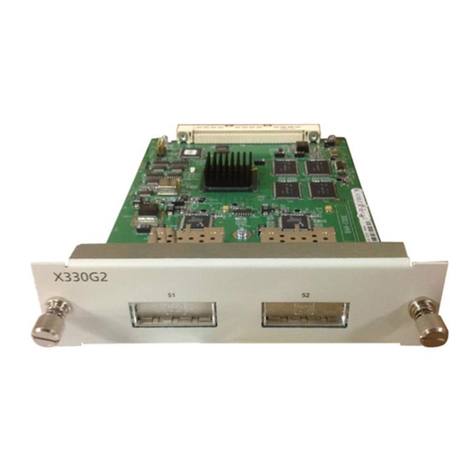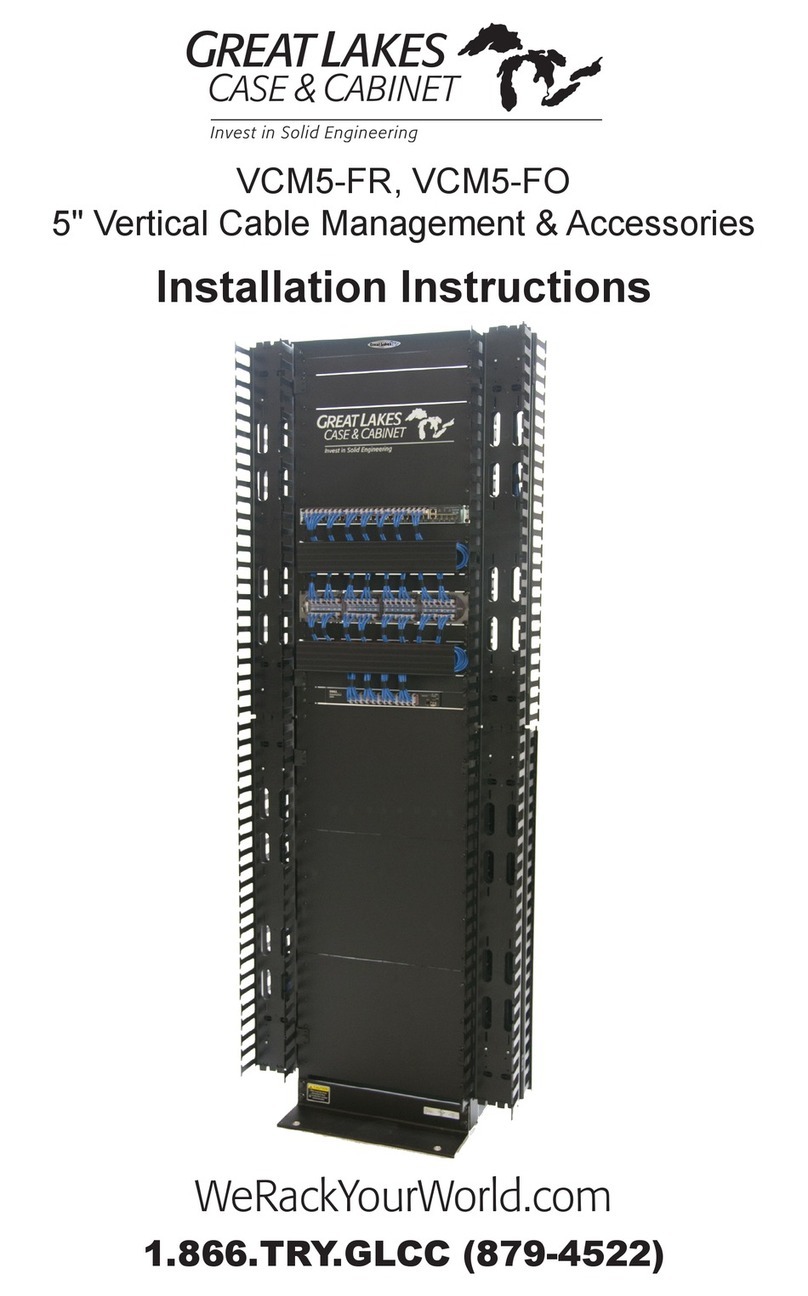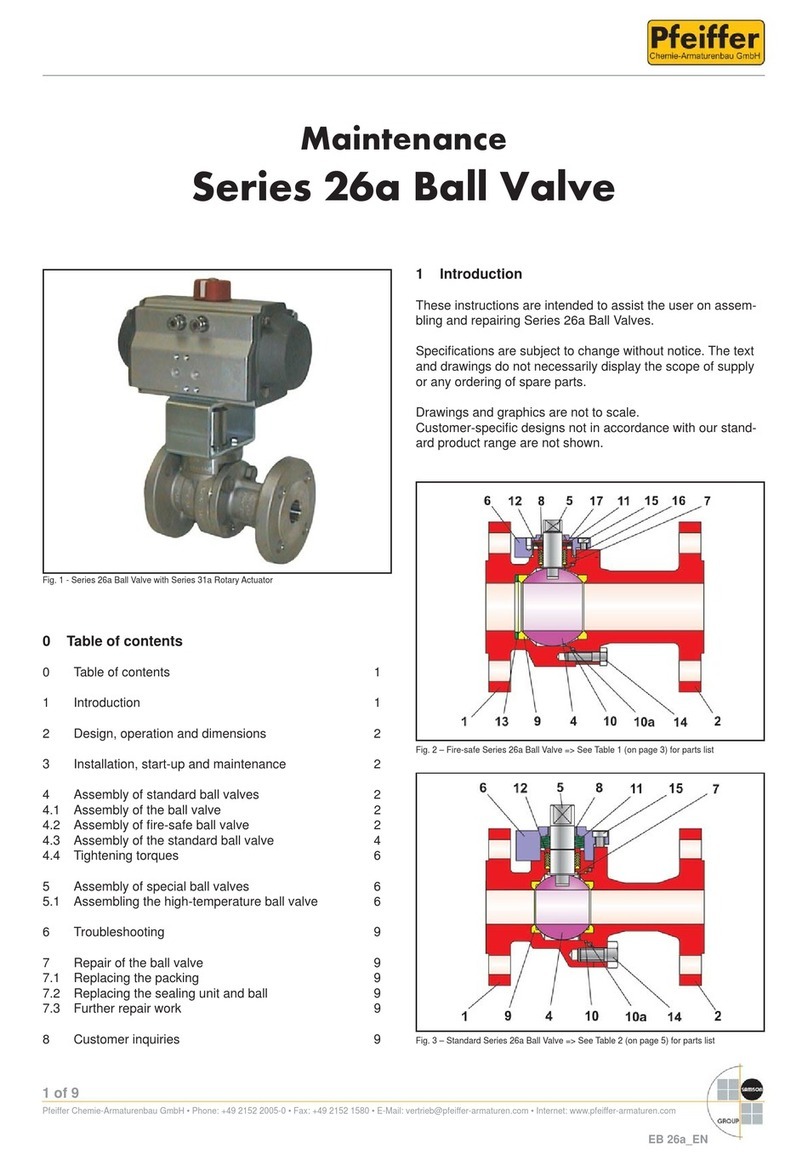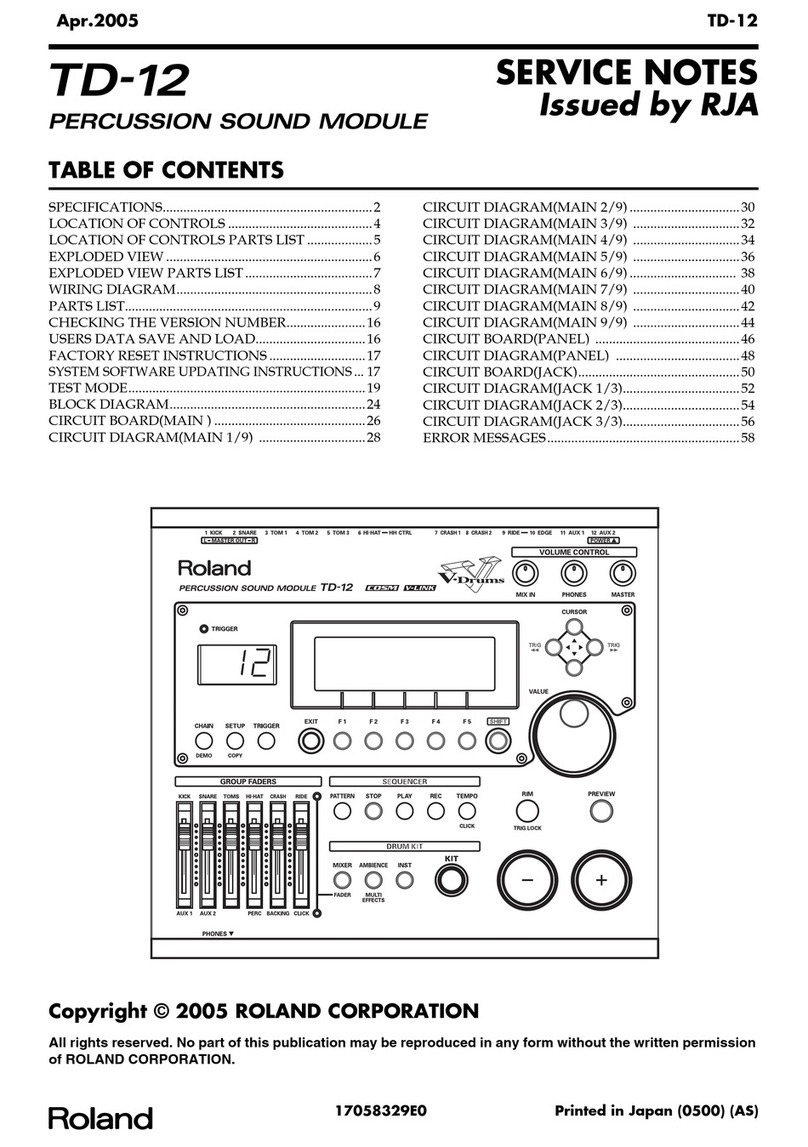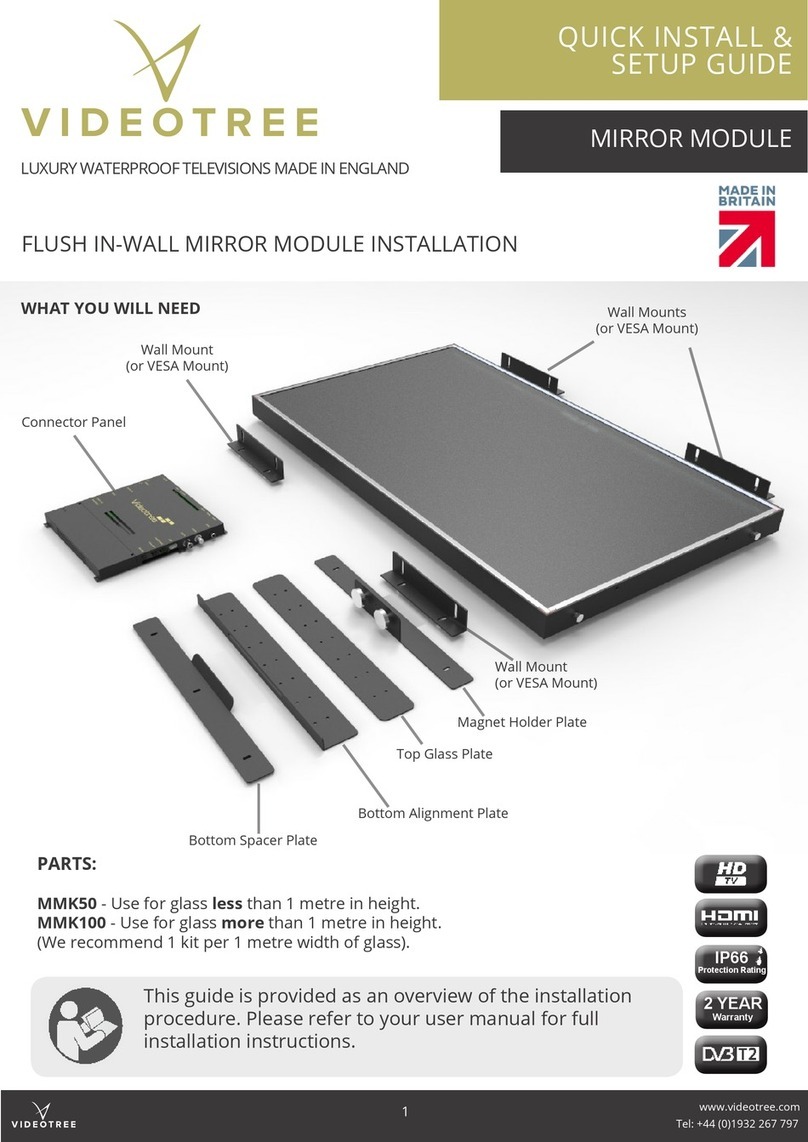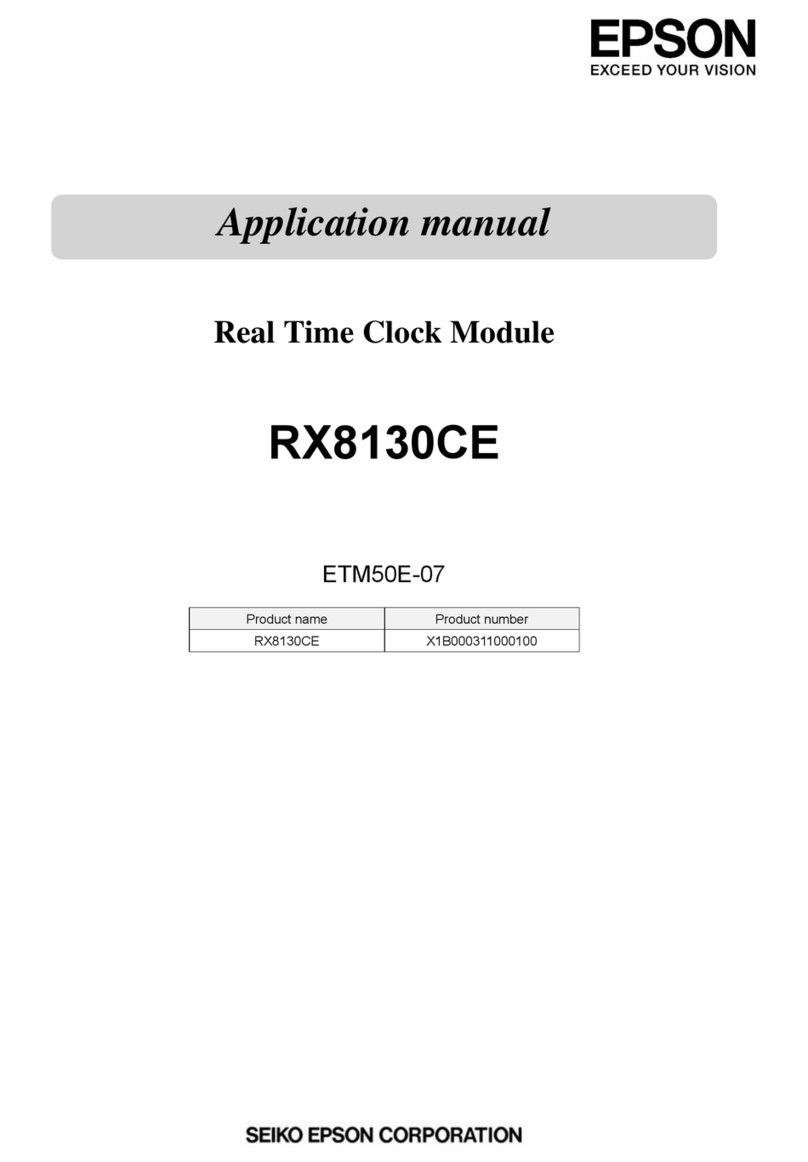BEINAT BX280-AX User manual

INSTALL IN SAFE
AREA, NO ATEX
Installation
and user guide
CERTIFIED
EN 50270 - EN 50271
EN 60079-29-1 EN 645544-1-3
With maintenance
program
II(2) G
3051 FTZU 18 ATEX 0108X
Control Unit from 1 to 2 Conventional sensors BX280-AX
Rev.1
Belonging to
Through the connection of 2 remote sensors, the BX280-AX control unit has been designed and built according
to European regulations to detect the presence of toxic and/or explosive gas in a flexible way
A microprocessor is used to create a complete surveillance and control system with maximum flexibility.
Thanks to this and its other features, the BX280-AX is suitable for civil and industrial applications.
The BX280-AX control unit has two danger levels:
1st LEVEL, 1st Pre-Alarm. It’s set at 13 % of L.E.L. for all sensors.
2nd LEVEL, Main Alarm. It’s set at 20% of L.E.L.
Other technical features make this control unit extremely versatile and reliable; for example, by using a series
of micro-switches it is possible to:
Select or disable a sensor when not installed or faulty;
Select the gas type to be detected (toxic or explosive);
Choose the relay functioning mode (pulsed or continuous);
Choose deadband exclusion mode
A TEST button checks the efficiency of both the unit and connected probe to ensure total control of the BX280-
AX
Thanks to the Omega-type format, small and large systems can be built by exploiting the modularity of the
DIN rail in the previously set electrical panels.
In addition to the alarm signal light, it is fitted with an internal buzzer.
Important: Assembly / maintenance of the appliance must be carried out by qualified personnel
and in accordance with applicable laws and regulations.
The manufacturer assumes no responsibility for the use of products that have to comply with
particular environmental and / or installation standards.
Important note
Before connecting the equipment, it is recommended that you read the instruction manual
carefully and keep it for future reference. It is also recommended to perform the electrical
connections correctly as per enclosed drawings, observing the instructions and the Standards.
N.B. Refer to the documentation in all cases where the symbol is on the side
Channel: Beinat gas solutions
Electric connections also available on

page 2
90 mm
45 mm
37 mm
Precautions
105 mm
90 mm
45 mm
CHECK the integrity of the unit after having removed it from the box.
Check that the data written on the box correspond to the type of gas used.
When doing the electrical connections, follow the drawing closely.
Any use of the unit for purposes other than the intended one is considered improper,
and as a result of which BEINAT S.r.l. therefore disclaims any responsibility for
possible damages caused to people, animals or objects.
IMPORTANT: Do not test the device using the gas tap as this does not necessarily
provide sufficient concentration to activate the main alarm.
TERMS and EXPECTATIONS: The installation of the control unit, its ordinary and extraordinary maintenance,
every six months, and its out of service removal at the end of the functional life guaranteed by the
manufacturer, must be carried out by authorized or specialized personnel.
In order to achieve long and satisfactory use of your digital control unit, use it by respecting the following
precautions.
Do not allow it to become wet.
This unit is not waterproof, if immersed in water or exposed to humidity high levels, can be seriously damaged
Do not drop it.
Heavy knocks or falls during transportation or installation can damage the appliance.
Cleaning
Never clean the device with chemical products. If necessary, wash with a moist cloth.
Technical Specifications
Mains Power ............................................................................................... 110/230VAC 50/60Hz ±10%
Secondary Power Through Battery max 1.2 Ah (Optional) not provided...................................12 V ±10%
Battery Charger max 1.2 Ah ................................................................ controlled by the microprocessor
The battery does not need maintenance
Power Demand .................................................................................................... 6 W max @ 230V
Power Demand ..................................................................................................... 5 W max @ 12 VDC
Relay Contact Range ..............................................................................................................10A 250V
Detection
1st Pre Alarm ....................................................................................... Set to 8% of L.E.L. or 120ppm CO
2nd Pre Alarm relay control.................................................................. Set to 13% of L.E.L. or 200ppm CO
Final Alarm relay control.................................................................. Set to 20% of L.E.L. or 300ppm CO
The LEL is calcuaded for Gas Methane .................................................................... 5000 ppm = 5% V/V
Data refresh ............................................................................................................................ 2 ms
Device Accuracy ..................................................................................................................... 1% FS
Sensor’s faults detected by Fault Circuit ................................................ Interruption, short circuit, or wear
OVER LOAD Check .....................................................................................................1 for each sensor
OVER LOAD Check ............................................................................................................ 1 for battery
Micro-switches to include or exclude the sensors ........................................................................ 2 built in
Max number of connectable sensor 2............................. Catalityc, Pellistor, Electrochemical Cell, Semiconductor
Input Signal ....................................................................................................... 4 ÷ 20 mA on 220 ohm
Functioning Temperature ................................................................................................. -10°C ÷ +60°C
Waiting, blinking time ....................................................................................................... 90 seconds
Manual Test ............................................................................................................................. Built in
Max. distance between sensors and unit....................................................................................... 100 m
Max. distance between battery and unit.......................................................................................... 0,5 m
Cable diameter to connect the sensors ......................................................................................... 1 mm2
Connection: The cable of connection of the sensor must not be installed together with the power
cables. Otherwise, make sure to use a shielded cable
Omega-type size DIN EN 50092 6 modules ................................................................................. 105*90*58
Degree of Protection .................................................................................................................... IP20

page 3
Main Compatible Sensors
Protec. Zone Detected Working Automatic
WARNING! Actions to be taken in case of alarm
1) Put out all free flames.
2) Close the main gas tap or the LPG cylinder tap.
3) Do not turn any lights on or off; do not turn on any electrical device or appliance.
4) Open windows and doors in order to increase ventilation.
If the alarm stops, its cause must be found and the relevant consequent measures taken.
If the alarm continues and the cause of gas presence cannot be found or removed, abandon
the building and call the emergency services when outside (fire department, distributors, etc.)
IMPORTANT: The operation test should not be carried out with the gas tap as this does not guarantee a
sufficient concentration to activate the general alarm.
Warning !!
If you have the following symptoms: vomiting, sleepiness, or else, go to the closest first aid
station and inform the operators that you could have been poisoned by Carbon Monoxide,
or by an excess or deficiency of oxygen
Probe Sensor Degree Suitable for Gas Range Output Precis. Calibration Relay
SG500 Catalyt ic I P 3 0 Domestic Use C H 4- LP G 0÷100% LEL 4÷20 mA ±5 % N O N O
SG544 Catalyt ic I P 4 4 Tertiary C H 4- LP G 0÷100% LEL 4÷20 mA ±5 % N O N O
SGM595 Catalytic I P5 5 Tertiary See catalogue 0÷100% LEL 4÷20 mA ±5 % Y e s N O
SGM595/A Catalytic I P 6 6 Zone 2 See catalogue 0÷100% LEL 4÷20 mA ±5 % Y e s N O
SGM533 Catalytic I P5 5 Tertiary See catalogue 0÷100% LEL 4÷20 mA ±5 % Y e s Y e s
SG800 Catalytic I P 6 6 Zone 2 See catalogue 0÷100% LEL 4÷20 mA ±5 % Y e s Y e s
HCF100 SemiCondut I P 5 5 Tertiary F R E O N 0÷300% ppm 4÷20 mA ±5 % N O Y e s
SG895 Pellistor ATEX Zone 1 See catalogue 0÷100% LEL 4÷20 mA ±5 % Y e s N O
SG580 Catalytic I P 6 6 Zone 2 See catalogue 0÷100% LEL 4÷20 mA ±5 % Y e s N O
SGF100 Catalytic I P6 4 Zone 2 Methane 0÷100% LEL 4÷20 mA ±5 % Y e s Y e s
SGF102 Catalytic I P6 4 Zone 2 L P G 0÷100% LEL 4÷20 mA ±5 % Y e s Y e s
SGF104 Optical Fluores I P 6 4 Zone 2 Oxyg en In % 4÷20 mA ±5 % Y e s Y e s
SGF106 SemiCondut I P6 4 Zone 2 F R E O N 0÷300% ppm 4÷20 mA ±5 % Y e s Y e s
SGF108 Elettrochimica I P6 4 Zone 2 H 2 S 0÷300% ppm 4÷20 mA ±5 % Y e s Y e s
SGF110 Electrochemical I P 6 4 Zone 2 C O 0÷300% ppm 4÷20 mA ±5 % Y e s Y e s
SGF112 Catalytic I P 6 4 Zone 2 Hydrogen 0÷100% LEL 4÷20 mA ±5 % Y e s Y e s
CO100r Electrochemical I P 5 5 Tertiary C O 0÷300% ppm 4÷20 mA ±5 % Y e s Y e s
CO100Ar ElectrochemicalIP66 Zone 2 C O 0÷300% ppm 4÷20 mA ±5 % Y e s Y e s
SG800duct Catalytic I P 6 6 Zone 2 C H 4 L P G 0÷100% LEL 4÷20 mA ±5 % Y e s Y e s
CO200duct ElectrochemicalIP66 Zone 2 C O 0÷300% ppm 4÷20 mA ±5 % Y e s Y e s
Application in:
Domestic: family accommodation. Local boilers up to 70 kW-h
Tertiary Areas: Large Rooms Boilers, Workshops, Material Deposits, Industrial Kitchens, Large Buildings, Buildings.
Zone 2 - Mixed IP66 ATEX: High probability of escape, high risk locations, premises for which applicable regulations apply.
Zone 1 - Hazardous Area, High Risk Hazards, Rooms for Which Regulations, Tanks, Control Valves are in force.
MAINTENANCE
The user periodically (every 6 months) must perform a check of the operation of the
control unit by spraying a suitable test gas at the base of the probes connected until the
alarm condition is reached.
• At least once a year make a more accurate check by a specialist technician.
• The disposal of the unit must be carried out by qualified personnel.
N.B. We recommend to check and certify your gas safety system with our tester TS1008.

{a} OVERVIEW
- Power supply 110/240 VAC
- Controls up to 2 remote sensors
- Manages explosive and toxic gases.
- Various possibilities of configuration parameters
- Status indications with LED.
- Output signals provided through 3 driving relays
- wall support 6 DIN modules.
- Conforms to the operating regulations EN60079-29-1
{b} GENERAL DESCRIPTION
The BX280-AX is a control unit capable to control the concentration of gas up to 2 input channels, each of
which can be connected via a 4-20 mA communication to a toxic or explosive gas detection/measurement
device. The control unit is built with the following I/O interfaces.
1) RED LED.
When it is on, the LED flashes for the first 100 seconds, which indicates that the control unit is in the warm up
mode. After this phase, the control unit enters detection mode.
When this LED is blinking, the BX280-AX is not able to detect gas.
2) BATTERY LED.
This LED lights up when the BX280-AX is powered by the battery in the absence of mains and flashes when
the battery voltage is less than 10.8 V.
3) LED SCALE CONCENTRATION GAS.
These LEDs light up in sequence, based on the increase to the gas dispersed in the environment.
a) When the first led turns on, the gas concentration level has reached the first pre-alarm threshold
b) When the second led turns on, the gas concentration level has reached the second pre-alarm threshold
c) When the third led turns on, the gas concentration level has reached the main alarm threshold
This LED is the "latching" type, it stays on to indicate the alarm presence stored in MEMORY, according to the
current operating regulations
LED OVERLOAD
4) The control unit is equipped with electronic OVERLOAD protections, to avoid irreparable damage.
LED OVERLOAD SENSOR
This LED lights up when there is a short circuit or excessive absorption in the power supply.
LED OVERLOAD BATTERY
This LED lights up when there is a short circuit or excessive absorption in the backup battery supply
Control Unit from 1 to 2 Conventional sensors BX280-AX
page 4
Instructionmanual
10
11
9
9
5 6 14 133
1
4
2
87
12

5) RESET BUTTON
A "RESET" button is provided to allow the user to cancel the events that occurred and are contained in the
memory by an intentional manual reset.
6) TEST BUTTON
Pressing the "TEST" button, it is possible to perform a functional test for the "pre-alarm" relay and the "general
alarm" relay, together with the warning lights and the acoustic alarm. Releasing the "TEST" button, its turns
off the lights and stops the acoustic alarm.
7) EXPLOSIVE GAS selection LED.
Turning on this LED indicates that the input has been configured to detect explosive gases.
WARNING! The flashing of the LED can also indicate the presence of under/over range entering input.
8) TOXIC GAS selection LED.
Turning on this LED indicates that the input has been set to detect toxic gases.
9) FAULT LED.
This LED lights up when a short circuit or open circuit occurs on the signal line.
WARNING! The blinking of both "Fault" LEDs indicates the occurrence of software or a power failure.
10) PRE-ALARM LED
This LED lights up when the gas concentration level reaches the second pre-alarm threshold (13% LEL for
explosive gases, 200 ppm for toxic gases).
This signal is "auto reset" type.
11) MAIN ALARM LED
This LED starts to blink when the gas concentration level reaches the main alarm threshold (20% LEL for
explosive gases, 300 ppm for toxic gases).
This signal is "latching", according to current performance standards.
12) DIP-SWITCH of the deadband suppression of the sensor 1 and 2
Setting these two switches ON or OFF, it is possible to enable or disable the suppression of the signaling of any
sub-range in the input signal in the corresponding input.
Instead, over ranges will always be reported.
Both conditions are indicated by the flashing of the "Explosive Gas" LED of the corresponding input. (7)
13) DIP-SWITCH OF POSITIVE SECURITY and RELAY MODE
Setting the first switch to ON or OFF, enables or disables the "positive safety" mode.
Setting the second switch to ON or OFF, switches to the main alarm mode CONTINUOUS or PULSE .
14) DIP-SWITCH OF SENSOR SELECTION and GAS TYPE SELECTION
Setting the first switch to ON or OFF enables or disables the corresponding input.
Setting the second switch to ON or OFF, switches to detecting gas from the explosive to the toxic.
WARNING! When a sensor is excluded, all memories will be restored.
The control units, in addition to the interfaces described above, is equipped with 3 output relays:
- FAULT RELAY: this "latching" relay switches when there is an error signal from the connected sensor (see
image below).
- PRE-ALARM RELAY: this "autoreset" relay switches when the detected gas concentration exceeds the second
pre-alarm threshold.
- MAIN ALARM RELAY: this "memory" relay switches when the detected gas concentration exceeds the main
alarm threshold.
WARNING!
All relay outputs of the control unit are voltage free.
The maximum range of such contacts is specified in the next chapters.
page 5

ELECTRICAL CONNECTION
The signal terminal block (previous figure) is composed as follows:
- Terminals 1, 2 and 3: Main power supply
- Terminals 4 and 5: fault relay contacts
- Terminals 6 and 7: Pre-alarm threshold relay contacts
- Terminals 8,9 and10: Main alarm relay contacts
a) Connect terminal 1 to ground, terminal 2 to phase, terminal 3 to neutral.
b) Power the system only when all the parameters have been configured.
c) Connect the desired utilities to the output relays described above according to your needs.
Then connect the sensors and the battery (optional) to the signal terminal block
The signal terminal block (previous figure) is composed as follows:
- Terminals 1 and 2: optional back-up battery connection.
- Terminals 3 and 4: sensor power supply. The voltage is generated by the control unit.
- Terminals 5 and 6: return signal of 4-20 mA sensors connection.
WARNING! The optional battery is charged directly by the control unit.
This control unit can connect a maximum of 2 sensors.
Each conforms to the 4-20 mA current loop system on this terminal block.
Connect the sensors as shown in the figure
Power supply
110/230 VAC
CNC
NO
CNC
NO
CNC
NO
PH N 4 5 6 7 8 9 10
Fault Pre-Alarm Main Alarm
ACTIVATION AND DEACTIVATION OF THE SENSORS
To enable/disable the sensor 1 act on the first switch of SW4 (first DIP-SWITCH from left).
To enable/disable the sensor 2 act on the first switch of SW3 (second DIP-SWITCH from left).
When a sensor is excluded, all the memories will be restored.
SELECTION OF THE TYPE OF GAS MONITORED FOR EACH SENSOR
The second switch of the DIP-SWITCHS previously mentioned allows to select between detection of explosive /
toxic gases.
Move the switch to ON for reading in LEL. Explosive gas.
Move the switch to OFF for reading in ppm. Toxic gas.
{c} OPERATING INSTALLATION INSTRUCTIONS
WARNING!
The installation parameters modification must be performed by qualified personnel
Be sure to disconnect the controller from the power supply before making changes to
the connections
Zone 1 Zone 2
(sensor) (sensor)
Microswitch (1) to enable or disable the sensor of the desired zone.
ON enabled OFF disabled
Microswitch (2) to select the type of gas monitored in the desired area.
Position ON reading in LEL - Explosive gas
Position OFF reading in ppm - Toxic gas
page 6
12 V
+ +
Optional
3 2 1
Sonda 1 3 2 1
Sonda 2
R1 R2
1 2 3 4 5 6

RELAY SETTINGS
SW2 DIP-SWITCH allows to choose between various relay settings.
COLLECTION EXCLUSION:
Setting SW1 it is possible to enable/disable the suppression of the signaling of any umderrange in the input
signal in the corresponding zone.
Zone 1 Zone 2
(sensor) (sensor)
page 7
After making all the connections and configurations, the system can be powered
Micro-switches 1Positive safety
Micro-switches 2Working mode of the main alarm relay
Zone 1 Zone 2
(sensor) (sensor)
SW1.1 ON: Sensor 1 dead band suppression DISABLED
OFF: Sensor dead band suppression ENABLED
SW1.2 ON: Sensor 2 dead band suppression DISABLED
OFF: Sensor dead band suppression ENABLED
WARNING!
> This control unit is NOT built for installation in ATEX classified areas
> To meet the requirements as a control unit according to the standard EN 60079-29-1: 2016, the
DIP switches on the control unit must be set to: SW2.1: ON, SW2.2: OFF, SW3.2: ON, SW4.2: ON.
> All the wiring of the remote sensors must be made using wires with a minimum section of 1.5
mm2 and no longer than 25 m. Do not use the same conduit for signal and power cables.
> In case of installation in the presence of strong EMC disturbances, the shielded cables use is
strongly recommended. The screen must be connected to the 'Gnd' terminal of the interested
area only on the side of the control unit.
> The appliance must be connected to the power supply by means of a switch capable of
disconnecting the poles in compliance with current safety standards and with a contact
separation of at least 3 mm in all poles.
> The installation and electrical connections of this appliance must be carried out by qualified
technicians and in compliance with the current technical and safety standards.
> Be sure to turn off the power before wiring the device.
> Safety depends on the installer (whose responsibility is to set up a detection system in
compliance with existing standards, both European and national) to choose the correct type of
loads to be connected to the control unit and the correct configuration of the system parameters.
In case of doubt, please contact the distributor.
Switch 1 – Selection of the positive safety
Position ON: the positive safety function is enabled.
The relay is energized after the warm up phase and turns off when the BX280-AX is main alarm
Position OFF: the positive safety function is disabled.
The relay is energized only when the BX280-AX goes into the main alarm
Switch 2 - Working mode, selection of the main alarm relay
Position OFF: the relay remains closed until the RESET button is pressed. (continuous)
Position ON: the relay remains closed for 20 seconds, and then disenergizes. (impulse)

{f} TEST
{d} OPERATIONAL LIMITATION
{e} % L.E.L. to % v/v CONVERSION
Refer to the remote sensor user manual
* The response time of the entire system is determined by the response time of all parts of the equipment
within the gas detection system.
The maximum delay time of a special status in case of transmission errors until insertion.
{g} WORKING CONDITIONS
page 8
01. This device can be set for explosive and toxic gases
02. For transverse sensitivities refer to the remote sensor user manual.
03. Response time T90: 1 second *
04. Temperature operating range: -10° C ÷ + 60° C
05. Humidity operating range: 0 ÷ 90% RH not condensed
06. Pressure operating range: 800 ÷ 1100 hPa
07. Power supply: 110/230VAC 50/60Hz
08. Absorption: 6W
09. Electrical wiring: see paragraph (c)
10. Batteries: max 1.2 Ah
11. Sample scope: Not applicable
12. Warm-up time: 100 seconds
13. Stabilization time: not applicable
14. Contact rating: 10A 250V
15. 1st interval pre-alarm range: for explosive gases set at 8% of L.E.L
for toxic gases set at 120 ppm
16. 2nd interval pre-alarm range: for explosive gases set to 13% of L.E.L.
for toxic gases set at 200 ppm
17. Alarm 1 threshold interval: for explosive gases set at 20% of L.E.L.
for toxic gases set at 300 ppm
18. Protective rating: IP20
19. Weight: 260 g
20. ATEX protection: this device must be installed in NON-CLASSIFIED ATEX areas.
Once activated, the control unit starts warm up for 100 seconds.
In this phase all the LEDs flash, waiting for the connected probes to go into full speed.
The power LED flashes until the warmup done.
Once started, the control unit enters detection mode: the power LED is on, even with the LEDs of the type
of gas selected on the zones enabled, based on the configuration of the DIP-SWITCHES.
It is therefore possible to carry out a first check of the system by pressing the test button: keeping this
button pressed, the control unit simulates a concentration of gas gradually increasing from the enabled sensors,
and it is therefore possible to control the switching on and off of the LEDs and that all switch relay, enabling
the loads connected to them.
Depending on the input signal of the remote sensors, the control units can be found in the following working condition:
NORMAL MODE: the control unit receives a signal from the sensors corresponding to a gas level between 0% and 8% of
LEL for explosive gases and between 0 ppm and 120 ppm for toxic gases.
The relays are off and no alarm or fault LED lights up. The buzzer is off.
1st PRE-ALARM: the control unit receives a signal from the sensors corresponding to a gas level between 8% and 13%
of LEL for explosive gases and between 120 ppm and 200 ppm for toxic gases.
The relays are off and the red "8/120" LED lights up. The buzzer is off.
2nd PRE-ALARM: the control unit receives a signal from the sensors corresponding to a gas level between 13%
and 20% of LEL for explosive gases and between 200 ppm and 300 ppm for toxic gases.
The pre-alarm relay changes state and the red LED "13/200" and "pre-alarm" also lights up
The pre-alarm relay is energized. The buzzer is on (low frequency).
MAIN ALARM: the control unit receives a signal from the sensors corresponding to a gas level higher than 20%
of LEL for explosive gases and greater than 300 ppm for toxic gases.
The main alarm relay changes state and the red "20/300" LED also lights up, the "Main alarm" LED flashes. The
main alarm relay is energized. The buzzer is on (high frequency).
OVER/UNDER RANGE: the control unit receives an under/over range signal. This condition is signaled through
two different flashing frequencies of the explosive gas LEDs.
The relays are off and no alarm or fault LED lights up. The buzzer is off.
FAULT: the control unit receives a "short circuit" or "open circuit" signal.
The yellow fault LEDs are on. The fault relay is energized. The buzzer is on (fixed sound).
SYSTEM ERROR: the control unit is blocked due to an internal fatal error.
The yellow error LEDs flash. Relays are OFF. The buzzer is on (LED frequency).

page 9
{i} PERIODIC CONTROL
{h} TROUBLESHOOTING
{m} BATTERY MAINTENANCE
{n} SPARE PARTS
This control unit has not user serviceable parts.
{l} AUTOMATIC RESET
{k} CONTAMINANTS
Not applicable to the control unit. For the remote sensor, refer to the remote sensor user manual
{j} STORAGE
This control unit has not compatible accessories.
{p} WARRANTY
{o} ACCESSORIES
Problem.
If the error LED lights up, the system reports an error status.
Possible cause: The input current loop is broken or the transmitter is not powered.
Solution:
Check the connections between the transmitter and the control unit for interruptions. Check with a multimeter the
presence of a voltage around 12 VDC between the "+ V" and "GND" terminals of the reference input.
MAINTENANCE
A periodic service must include the following operations:
a) (every 6 months): Check the correct operation of the detection system by applying calibrated gas to each remote sensor
and checking the value.
Refer to the user manual of the sensors for more information.
b) (every 12 months): revision of the control unit transfer function and correct detection of anomalous situations.
This can be done by disconnecting the sensors and forcing through a suitable calibrator the input current of each zone to the
significant values for example:
0 mA: open circuit,
3,7 mA: under range,
4-20mA: normal operation,
21 mA: Over range
23 mA: fault.
The following figure shows the conversion between mA and the corresponding gas concentration.
0 60 120 200 240 300 337
mA
Fault zone
Over range area
Under range area
Fault zone
7,2
0
10,4
16,8
20
14,7
4
3,6
22
ppm
Linear +/-5%
0 4% 8% 13% 16% 20% 22%
mA
Fault zone
Over range area
Under range area
Fault zone
7,2
0
10,4
16,8
20
14,4
4
3,6
22
LEL
Linear +/-5%
3,8 3,8
Explosive gas detection diagram Toxic gas detection diagram
Temperature operating range: -10° C to + 60° C
Humidity operating range: 0 ÷ 90% RH not condensed
Pressure operating range: 800 ÷ 1100 hPa
The pre-alarm relay state is automatically reset when the concentration drops below the pre-alarm threshold.
On the contrary, the alarm relay state CANNOT be automatically reset and remains in memory until the control
unit is reset by the user. Refer to the section for details.
This control unit is equipped with input terminals (1 and 2) for backup of the external 12 VDC power supply.
The control unit charges the battery up to 1.2 Ah.
Battery maintenance operations must be based on the manufacturer's technical information.
With a view to the constant development of its products, the manufacturer reserves the right to modify technical data and
functions without prior notice.
The consumer is guaranteed for any lack of conformity pursuant to European Directive 1999/44 / EC, as well as to the
manufacturer's document about the warranty policy.
The full text of guarantee is available on request from the seller.

12 V
+ +
Optional
3 2 1
Sensor 1 3 2 1
Sensor 2
R1 R2
1 2 3 4 5 6
ELECTRICAL CONNECTIONS
{q} MARKING
Power supply
110/230 VAC
CNC
NO
CNC
NO
CNC
NO
PH N 4 5 6 7 8 9 10
Fault 1°Threshold Main Alarm
{r} INSTALLATION EXAMPLES
Diagram of the terminal block relay
Connection of probes and eventual battery
Page 10
Example of a label
WARNING.
Before connecting to the mains power,
ensure the voltage is correct.
Carefully follow the instructions and the
connections according to Regulations in
force, keeping in mind that the signal
cables should be laid separate from the
power cables.
An automatic cut-off switch (appropriately
identified as devicesectioning of the
detector) should be incorporated in the
electrical system, adequatelylocated and
easily accessible.

Diode
1N 5406
Solenoid valve GAS and Sirens 12 VDC
12 V
+ +
3 2 1
Sensor 1 3 2 1
Sensor 2
R1 R2
1 2 3 4 5 6
Powersupply
230/12V
CNC
NO
CNC
NO
CNC
NO
PH N 4 5 6 7 8 9 10
Fault 1°Threshold Solenoid valve NC
Ph
N
CNC
NO
CNC
NO
CNC
NO
PH N 4 5 6 7 8 9 10
Fault 1°Threshold Alarm Solenoid valves
Ph
N
110/230
VAC
NC NA
Connections of one solenoid valve Normally Closed with Positive Safety
Connections of a solenoid valve Normally Closed without Positive Safety
Page 11
110/230
VAC
Electrical connection example
If a 12Vdc solenoid valve is connected to BX280-AX and it does not work well.
Direct connection of 12VDC solenoid valves or sirens to BX280-AX is not possible.
An external power unit must always be used. BX280-AX gives a max current of 50mA.
Control unit power supply and connection of one solenoid valve with sirens to 12 VDC trough an
alternative source and recharge battery.

Page 12
Ph
N
CNC
NO
CNC
NO
CNC
NO
PH N 4 5 6 7 8 9 10
Fault 1°Threshold Alarm Solenoid valves
Diode
1N 5406
12 V
+ +
3 2 1
Sensor 1 3 2 1
Sensor 2
R1 R2
1 2 3 4 5 6
Powersupply
230/12V
Ph
N
230 VAC
230 VAC
If a 12VDC solenoid valve is connected to BX280-AX and it does not work well.
Direct connection of 12VDC solenoid valves or sirens to the BX280-AX is not possible.
An external power unit must always be used. The BX280-AX gives a max current of 50mA.
Electrical Connections
Connections to Positive Safety disabled and an external power
supply for valve control and siren 12VDC.

Page 13
Sensors installation and positioning
The BX280-AX control unit belongs to group II and must be installed in a safe area;
Outside the ATEX zone, however, not in boiler rooms or engine room.
The control unit must be accessible and visible to the user.
The BX280-AX is designed so that it can be mounted into electrical panels.
The Control Unit complete cabinet is an equipment suitable for wall mounting and is powered by 110/240
VAC with IP20 protective rating
When installing, it is good to use the normal care that an electronic equipment requires:
- Install the equipment away from excessive heat sources.
- Avoid liquids coming into contact with the control unit, remembering that its external structure has IP20
protective rating if installed in the electrical panel, it takes the panel protective rating
Control unit installation and positioning
The sensors must be selected with an IP degree depending on the area to be controlled (Kitchens,
Boiler Rooms, Laboratory, etc.) by selecting one of the probes from Beinat from IP30 to ATEX. see
page 3
Position of the detection sensors
You can connect many types of remote probes to this unit. Therefore, they should be positioned at different
heights depending on the type of gas to be detected.
These heights are:
- 30 cm from the lowest point of the floor in order to detect: Heavy gases (L.P.G. etc.)
- 30 cm from the highest point of the ceiling in order to detect: light gases (Methane, etc.)
- 160 cm from the lowest point of the floor in order to detect: volatile gases (CO, etc.)
It is important that the remote sensor must be installed bearing in mind that:
1) The sensors should not be placed near the appliances to be controlled (boilers, burners, industrial
kitchens, etc.) but on the opposite side.
2) The sensors should not be affected by smoke, vapour, moving air, as they could distort their detection.
3) The sensors should not be placed near sources of heat, ventilators or fans.
It is necessary to warn that the sensors of the gas detection probes are perishable components, whose
average duration varies from 5 to 6 years (ask for a possible table) therefore after this
period, they must be replaced.
4) The operation check and the ordinary and/or extraordinary maintenance must be performed at least once
a year.
When the fault LED turns on, the sensor must be replaced by a specialized technician.
PROBE INSTALLATION INFORMATION
30 cm Light Gases
30 cm Heavy Gases
160 cm VolatileGases

Pagina 14
1) Apply power using the proper switch. This switch should be fitted with protection fuses.
2) You will notice that some LEDs will light up in turn for about 20 seconds, so as to test the LEDs.
3) The COUNTDOWN begins that lasts about 90 seconds (warm up) afer this the unit is ready to detect.
4) By pressing the TEST button, you get the simulation of a gas leak and the unit carries out the following:
a) The Pre-alarm LED lights up calibrated to 13% LEL or 200 ppm (referred to CO) switching the relay the
buzzer will issue a low frequency sound
b) The Main alarm LED lights up calibrated to 20% LEL or 300 ppm (referred to CO) switching the relay.
The Main alarm LED starts flashing; the buzzer will issue a hight frequency sound
5) To complete the general test, issue gas from a pre-calibrated aerosol
6) If you want to simulate a zone fault, you only need to disconnect the return cable of the corresponding
sensor.
-lights up the flashing LED and FAULT led of the MAIN ALARM led;
-the buzzer emits a continuous sound;
-the fault relay and the main alarm relay will switch.
Reconnect the return cable and press the RESET button to restore the functioning of the control unit.
If other problems arise, a specialised and/or authorised technician and/or the Distributor of BEINAT S.r.l. should be
contacted directly.
If the device does not start up.
Check that the 230V mains power is correctly connected. If powered by the battery, check that the 12Vdc power
is correctly connected.
If the Fault LED lights up.
Check that the connecting cables from the BX280/ax to the probes are intact, that the probes are properly
powered, and that the signal cable is correctly connected.
If the Over Load Probe LED lights up.
Check: that the power polarity has not been inverted, that no short-circuit is present,
that the probes were not damaged during installation, that no excessive current absorption is present.
If the Over Load Battery LED lights up.
Check that the connection cables are not short-circuited, that the polarity has not been inverted, or that the
battery is not damaged
If the Control Unit is repeatedly issuing an alarm.
Check that there are no gas leaks. If the alarm signal and the FAULT indicator light turn on together, check
the probes.
If the Control Unit is issuing an alarm and does not shut off the devices connected to it.
Check that the wiring is correct and that the jumper that carries power to the relay has been set properly. All
relays must be free from electrical power.Check the drawing of the connections.
If a 12VDC solenoid valve, which does not work well, is connected to the BX280-AX.
Direct connection of 12VDC solenoid valves or sirens to the BX280-AX is not permitted.
An external power unit must always be used.
The BX280-AX gives a max current of 50mA.
Troubleshooting and solutions before calling a technician
013
2
1,1
VDC
Voltmeter
WARNING.
This measurement should
be performed in clean air.
12V
+ +
Optional
3 2 1
Sensor 1 3 2 1
Sensor 2
R1 R2
1 2 3 4 5 6
Turning on the BX280-AX

Page 15
NOTE
La pressione simultanea e prolungata per 5 secondi dei tasti “TEST” e “RESET”
abilita la modalità manutenzione.
La centralina non commuta il relè di allarme generale per un periodo di 15 minuti;
L'allarme non verrà attivata anche premendo il pulsante manuale esterno.
La conferma della messa in servizio riuscita viene indicata dal LED "RETE"
lampeggiante verde, vedere pagina 4
Questa modalità può essere terminata prima della scadenza naturale, ristabilire
la centralina premendo il tasto "RESET"
To proceed with the insertion of maintenance it is
necessary:
Identify two electrical contacts, shown here with
two red parallel bars
As you can see, make a short circuit with a
screwdriver or other,
Here on the side marked by two red parallels
To enable maintenance mode based on regulations, a manual command must be performed.
Follow the instructions below.
Once the manual command has been executed, proceed as follows:
Plant maintenance
RESET TEST
Maintenance Test
The simultaneous and prolonged pressing for 5 seconds of the "TEST" and
"RESET" keys enables the test-on mode.
in which the control unit does not switch the general alarm relay for a period of
15 minutes; Not even by pressing the external manual button.A further press of
the keys in the same mode extends the time by 15 minutes up to a maximum
of 60 minutes.
In this mode, the string "tESt-On" (scrolling) is displayed before each passage
from the current channel to the next, followed by the minutes of the general
alarm relay being decommissioned.
You can terminate this mode before resetting the control unit by pressing 3
consecutive times and within 5 seconds the RESET button

BE-Rev1-1925
INSURANCE. This device is insured by the SOCIETÀ REALE MUTUA for the PRODUCT'S GENERAL LIABILITY
up to a maximum of 1,500,000.00 EURO against damages caused by the device in case of failures in functioning.
WARRANTY. The warranty term is 3 years from manufacturing date, in agreement with the following
conditions. The components acknowledged as faulty will be replaced free of charge, excluding the replacement
of plastic or aluminium cases, bags, packing, batteries and technical reports.
The device must arrive free of shipment charges to BEINAT S.r.l.
Defects caused by unauthorized personnel tampering, incorrect installation and negligence resulting from
phenomena outside normal functioning shall be excluded from the warranty.
BEINAT S.r.l. is not liable for possible damage, direct or indirect, to people, animals, or things; from product
faults and from its enforced suspension of use.
DISPOSAL OF OLD ELECTRICAL & ELECTRONIC EQUIPMENT.
This symbol on the product or its packaging to indicates that this product shall not be treated as household waste. Instead, it shall be handed over to
the applicable collection point for the recycling of electrical and electronic equipment, such as for example:
- sales points, in case you buy a new and similar product
- local collection points (waste collection center, local recycling center, etc...).
By ensuring this product is disposed of correctly, you willhelpprevent potential negative consequence for the environment and human health, which could
otherwise be caused by inappropriate waste handing of this product. The recycling of materials will help to conserve natural resources. For more detailed
information about recycling of this product, please contact your local city office, your household waste disposal service or the shop where you purchased
theproduct.
Attention: in some countries of the European Union, the product is not included in the field of application of the National Law that applies the European
Directive 2002/96/EC and therefore these countries have no obligation to carry out a separate collection at the “end of life” of the product.
BEINAT S.r.l.
Via Fatebenefratelli 122/C 10077, S. Maurizio C/se (TO) - ITALY
Tel. 011.921.04.84 - Fax 011.921.14.77
http:// www.beinat.com
IP20
Control Unit BX280-AX
Madein Italy
Lo styling è della b & b design
Dealer stamp
Date of purchase:
Serial number:
La Beinat S.r.l. following the purpose of improving its products, reserves the right to change the technical, aesthetic and functional characteristics
at any time and without giving any notice.
Technical support - laboratorio@beinat.com
Table of contents
Other BEINAT Control Unit manuals

